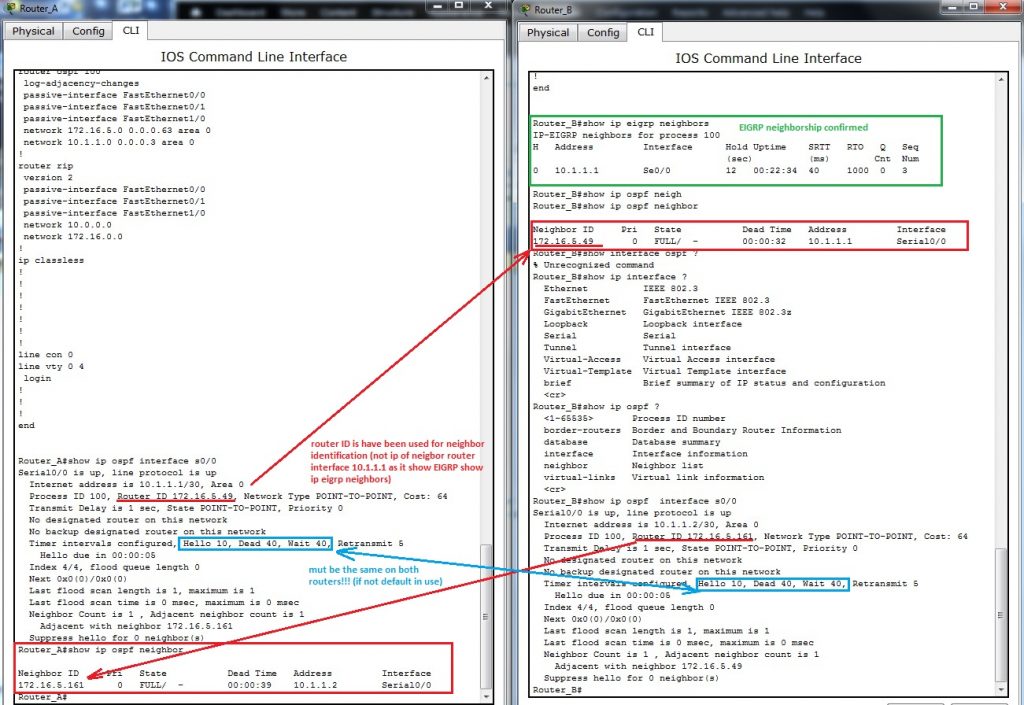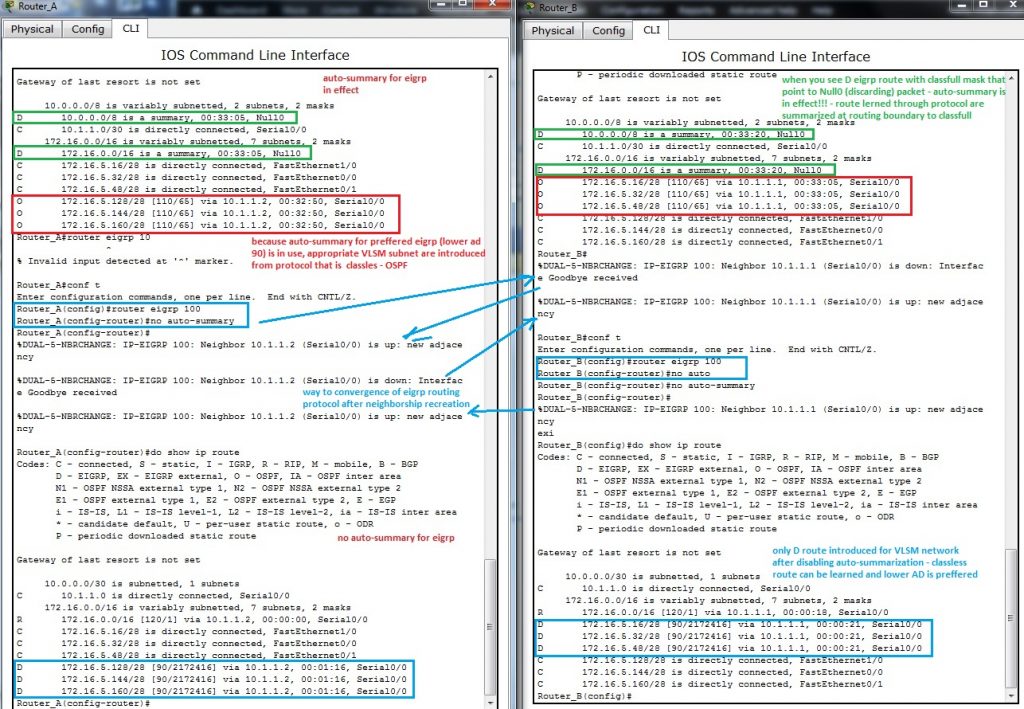16. Administrative Distance and route source preference
In environment with 2 or more enabled routing protocols must be present mechanism for selection of routing sources that are learned. What routing protocol obtained routes for remote network will be introduced to routers routing table? That is a big question.
Administrative Distance in short AD is considered parameter that will break the tie and say about trustworthiness of routing source.
| Routing source |
AD (administrative distance) |
|---|---|
| connected | 0 |
| static | 1 |
| EIGRP summary route | 5 |
| External BGP | 20 |
| Internal EIGRP | 90 |
| IGRP | 100 |
| OSPF | 110 |
| IS-IS | 115 |
| RIP | 120 |
| External EIGRP | 170 |
| Internal BGP | 200 |
Say in other words – AD is number from interval <0, 255>. And lower is better that mean static route (AD=1) is preferred over OSPF learned route (AD=110).
Training scenario focus on introduction routing sources (learned route) from RIP, EIGRP and OSPF routing protocols.
Fully configured lab. scenario for Cisco Packet Tracer 5.2 or above can be obtained from here. Topology diagram show next picture.

Routing protocols configuration is
| Router_A | Router_B |
|
router eigrp 100
passive-interface FastEthernet0/0
passive-interface FastEthernet0/1
passive-interface FastEthernet1/0
network 172.16.5.0 0.0.0.63
network 10.1.1.0 0.0.0.3
auto-summary
!
router ospf 100
log-adjacency-changes
passive-interface FastEthernet0/0
passive-interface FastEthernet0/1
passive-interface FastEthernet1/0
network 172.16.5.0 0.0.0.63 area 0
network 10.1.1.0 0.0.0.3 area 0
!
router rip
version 2
passive-interface FastEthernet0/0
passive-interface FastEthernet0/1
passive-interface FastEthernet1/0
network 10.0.0.0
network 172.16.0.0
!
ip classless
|
router eigrp 100
passive-interface FastEthernet0/0
passive-interface FastEthernet0/1
passive-interface FastEthernet1/0
network 172.16.5.128 0.0.0.63
network 10.1.1.0 0.0.0.3
auto-summary
!
router ospf 100
log-adjacency-changes
passive-interface FastEthernet0/0
passive-interface FastEthernet0/1
passive-interface FastEthernet1/0
network 172.16.5.128 0.0.0.63 area 0
network 10.1.1.0 0.0.0.3 area 0
!
router rip
version 2
passive-interface FastEthernet0/0
passive-interface FastEthernet0/1
passive-interface FastEthernet1/0
network 10.0.0.0
network 172.16.0.0
!
ip classless
|
EIGRP and OSPF routing protocols will create neighborship relation between facing interfaces. This mechanism is important for generate triggers after breaking relationship after topology change in network and cause generating and spreading routing protocols PDU, algorithm recalculation and rearrangement in routing table.
If routing table is missing expected route please take a look at creation of neighbor relation and verify appropriate timers that trigger sending hallo packet or define time for detaching route from table after their potential error.
Important commands for troubleshooting at CCNA level are:
- show ip eigrp neighbors
- show ip ospf neighbor
- show ip ospf interface INTERFACE
- show ip route
- show ip protocols
Output from neighborship verification commands are

Now we can look at routing table both router A and B. What we can to expect? Which routing protocol introduce their route to routing table? Lower AD is preferred and lowest AD has EIGRP!
But what is wrong, routing table show only classfull D (Duall EIGRP route) that point nowhere (Null0)? Can you mentally answer why it is so? What is wrong in our config? Classless VLSM route (network mask is longer as appropriate classfull mask) are introduced by OSPF because OSPF is inherently classless routing protocol.
Please remember that null0 classfull route introduced to routing table by EIGRP protocol (leading D for that route) is because auto-summary was not suppressed and is in use. For correcting this behavior on our network we must type no auto-summary on router-config command prompt of router eigrp 100.
All that was we describe is recorded from output of CLI Router_A and Router_B on next picture.

———————-
One of many processes that run on our router is mapping L3 address to L2 mac address on Ethernet interfaces. Info about learned relationship between L3 and L2 address offer ARP table of router. Their output can be visible after typing show arp on privileged exec of CLI (output depend on previews communication, arp cache is dynamic table that is aged after appropriate time non use of connection. That mean, if you will have all mac in table you must make ping sweep).

Records with character – in Age column is local interface of device. These records are excluded from aging mechanism! (- mean local interface on device, other are learned through ARP protocol)


